
When good enough beats better
The Consolidated TBY Sea Wolf was a USN carrier-borne torpedo aircraft, contender and contemporary to the Grumman TBF Avenger, but which development dragged on to such a point, it never saw battle, with a small number delivered and ultimately the whole order cancelled in September 1945. It is the "alt avenger" a completely alternative, what-if, plagued by lack of luck, bad timing amidst a long development, war emergency, and a last minute change of manufacturer. Despite being superior to the Avenger, it is now largely forgotten.A Plagued Development
Consolidated Aircraft in fact even had nothing to do with it: It was rather Vought which planned the then XTBU-1 Sea Wolf at first, in a 1939 US Navy prerequisite. Amazingly when thinking of its fate, the initial prototype flew... just 14 days after Pearl Harbor ! More than than, is displayed such capabilitoes, performances and promises, that it was overall considered better than the Avenger it competed with, and initially the Navy submitted a request for 1,000 to be built; So what went wrong and why the Avenger was adopted instead ?Call for tenders (October 1939)
So the Chance-Vought XTBU-1 had it's genesis in October 1939 when the Bureau of Aeronautics sent to the US aircraft industry a request for proposal for a new torpedo bomber, which could replace the Douglas TBD Devastator then in service.The specification included of course the new model to be a modern monocoque all-metal monoplane with folding wings, retractable undercarriage and tail hook as a basis, carrying a crew of three, but specifically to meet a top speed of at least 300mph (482 km/h) and to be able to carry one standard airborne 18 inches torpedo, or three 500lb bombs (227 kgs) internally to avoid drag and maintain high performances.
Crucially it also had to be fitted with self-sealing fuel tanks, and armour to protect the pilot and crewmen, as well as a rear powered dorsal gun turret. The package was intimidating but reflecting the navy exigence to what it considered a world's best in class torpedo aircraft at that stage.
Several companies at the time submitted designs satisfying this set of specifications, and were compared, but ultimately all were elminated but two: Grumman and Chance-Vought. Each based on their specifications received orders to build prototypes. Both were in fact very similar projects, the TBD and TBY being very close in overall appearance, but the Chance-Vought design was certainly nimbler and less 'chunky' than the Avenger. It also had a longer greenhouse canopy so to ensure better visibility overall and room inside, but was deserved by the fact it's wings when folded took more space than Grumman's own design.
Prototypes are compared (December 1941)
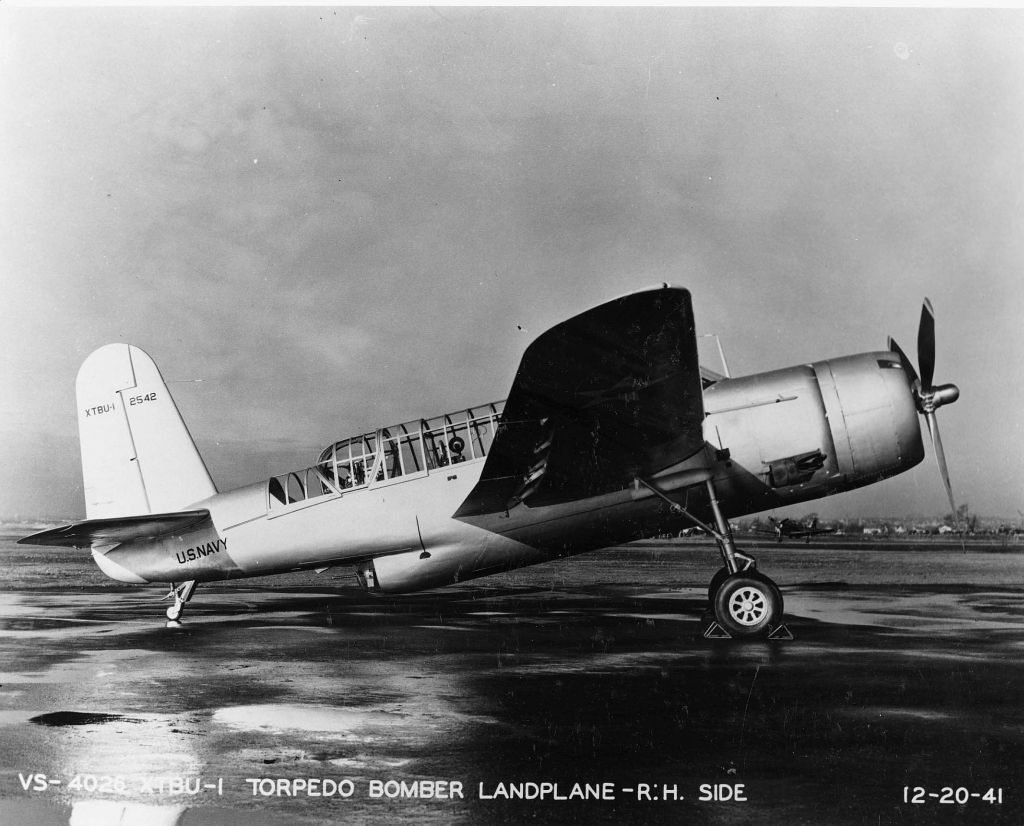
The prototype from Chance-Vought was to be powered by the assumed reliable Pratt & Whitney R-2800-6 engine still in development when the Navy in April 1940, the U.S. Navy contracted with Vought for a single prototype. It was to be provisionally fitted with the P&W R-2800-2. It was officially designated by the Navy ordnance bureau XTBU-l, the code TB reflecting it's nature and U a manufacturer code for "Chance-Vought". But soon with the war erupting the Navy decided to simplify model recoignition and attribute names. The XTBU-1 was therefore called "Sea Wolf" after a popular consultation.
From April 1940 to December 1941, so almost two years, Chance-Vought developed its prototype, but it accumulated problems and fixes, and ultimately Grumman was faster to show off it's prototype: The TBF first flew on 7 August 1941. It started badly for Vought, but still the Navy wanted comparative tests, and after the TBF was tested exhaustively, the staff waited petiently for the XTBY-1 to be shown in turn. That is until 7 December 1941. by then the USA were at war, and the staff could legitemely had asked the contract to be revoked due to exceptional condition and solidify the TBD right away for mass production.
In fact the latter already gained a production order in December 1940. But many in the staff still where confident the graceful lines of it's contender were a promise of better performances and thus, based on Chance-Vought insistence of a of a very close devlivery, maintained the deal at least for a "backup model" and even possible replacement.

Vought XTBU-1 aft view 1941
And on 22 December under a cloudy and windy sky, exactly 21 months after being first ordered (22 April 1940), the Chance-Vought XTBU-1 flew for the first time at the factory's airfield. It showed promises and the test pilot appriciated it's handy new unusual feature, a single control both lowering undercarriage and flaps, setting the propeller pitch and fuel mixture, all ready for landing. Since a carrier landing was a stressful experience, it was potentially a life-safing measure, one that could be appreciated by the Navy, especially for the numerous rookie pilots with limited trainingn it would have on hands in wartime.
For the rest, Chance-Vought team was confident. It was fast, responsive, and displayed generally safe flight characteristics, even with the self-leasing tanks and some armort plating. And it was still given the R-2800-2, so there were hopes of even better performances with the R-2800-2. After fixes, it only reached the test airfield for official navy trials at NAS Anacostia in March 1942. There, the Navy noted it was 30 mph faster than the Avenger, and would later exhibit generally good flight characteristics. However it's official debuts were catastrophic.
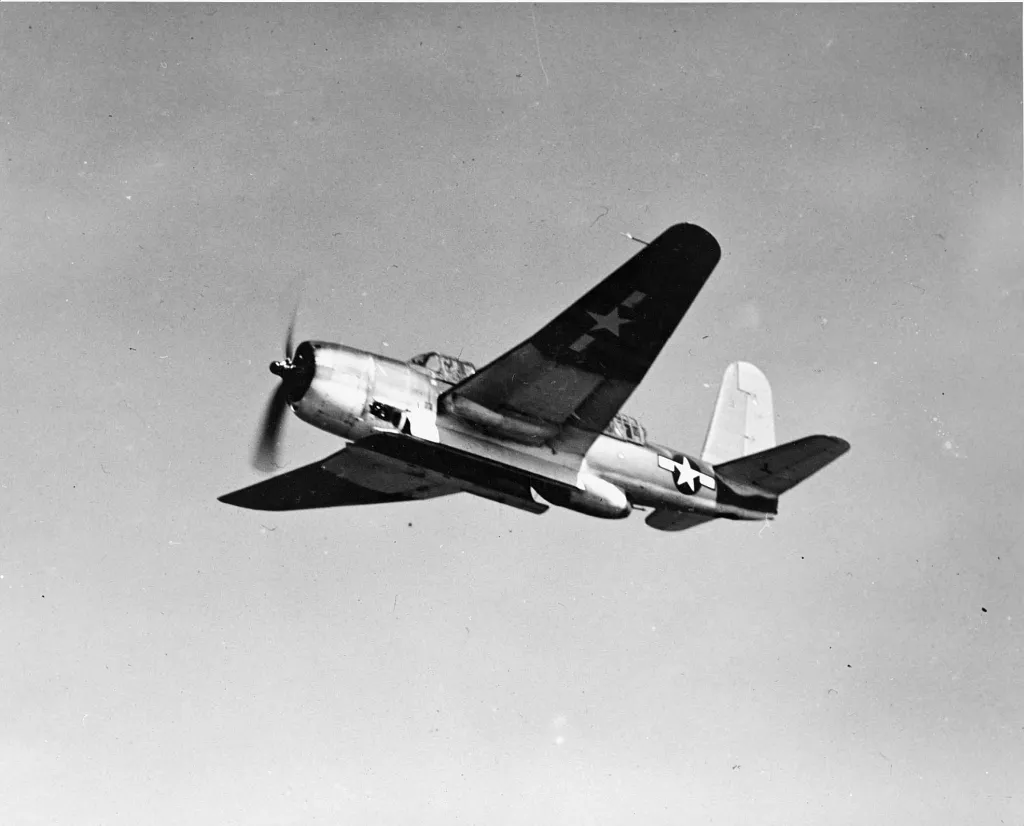
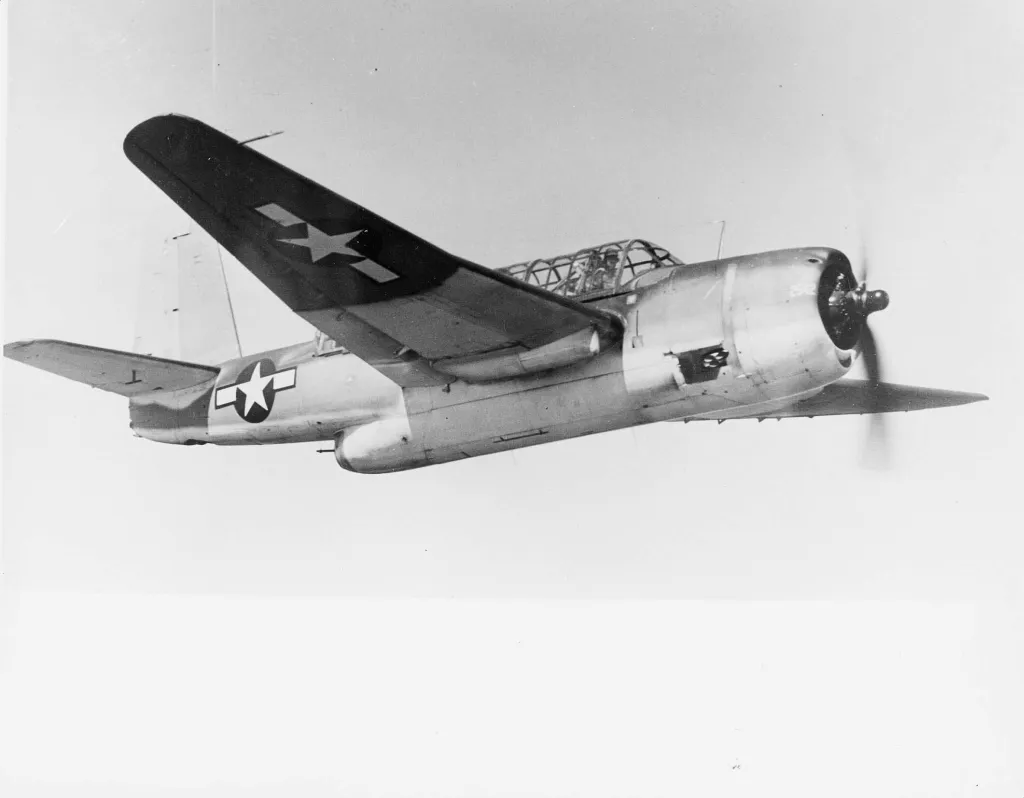
XTBU-1 in flight showing it's bomb bay opened and closed
The model indeed made a perfect approach, seized the arresting cable and... broke in two. This harsh captured landing preliminary test did not impressed the Navy. After strenghtening it in a just a month, teams working around the clok, it flew again in April 1942, the prototype was almost completely destroyed in a crash as a cadet on another plane loosing control when taxiing and smashing into the prototype's tail. After being rebuilt again, it was tested several months later, and this time the flight was almost flawless, leading it to be at last was acknowledged by the Navy. But after requesting more fixes for its prototype, the Navy wanted this time to order it, but Vought at the time was concentrating on current productions like the F4U fighter. There was no room to spare. However in wartime, the Navy could order Vought to cede for free all it's blueprints to another manufacturers which actually had some industrial capacity.
1942-43's production reorganisation and attribution to Consolidated
The Navy then decided in September 1943 that the development would go instead to Consolidated-Vultee, tasked to deliver the final production TBY-1 (the letter changed accordingly from "U" to "Y") as an alternative to the Grumman TBF. However to produce the TBY, a new facility was needed, based in Allentown, Pennsylvania, to be completed. This took until late 1943 to be setup and many more month for tooling.This new delay pushed back the production of the TBY further away in 1944, and in the meantime, the Navy started to change it's requirement, something never good when combined by a project taken over by a new company that had nothing to do with its initial development. The modified TBY-2 was to be indeed fitted with a radar and it's radome placed under the right-hand wing. Blueprints needed to be redrawn and a new prodution schedule setup. Still, rfefinements were made to various features. The XTBU-1 was armed with a single, fixed forward firing 0.50in gun located in the engine cowling, and a single 0.50in gun in the power-operated dorsal turret, oplus lije the Avenger, a third one mounted in the "stinger", the caracteristic ventral tunnel position defending the most vulnerable spot. It was the obsvious same confuiguration as the Avenger, sometihing not initially planned.
1944's TBY-2

TBY-2 in flight circa 1945
The modified XTBY-2 made it's maiden flight on 20 August 1944. The new company ideed had a hard time adapting the design and working out its new features. At this point the Avenger was firmly entrenched as the premier US Navy's torpedo plane, delivered to all and every fleet and fast carriers in action in the pacific. The standard was acceptable enough and training was setup for it essentially. In fact, production was now even enlarged, with the TBM, produced now also by General Motors, as the Wildcat, for escort carrier service.
At that stage, there was no longer any requirement for the original Sea Wolf and Consolidated was not very interested in refining this model. Various little issues postponed in fact passage into service for many months afterwards. It dragged on until at last Consolidated-Vultee received an order for 1,100 TBY-2, all radar-equipped, mostly for night operation and long range ASW patrol. The new TBY-2 was a significantlt different aicraft from the original XTBU-1:
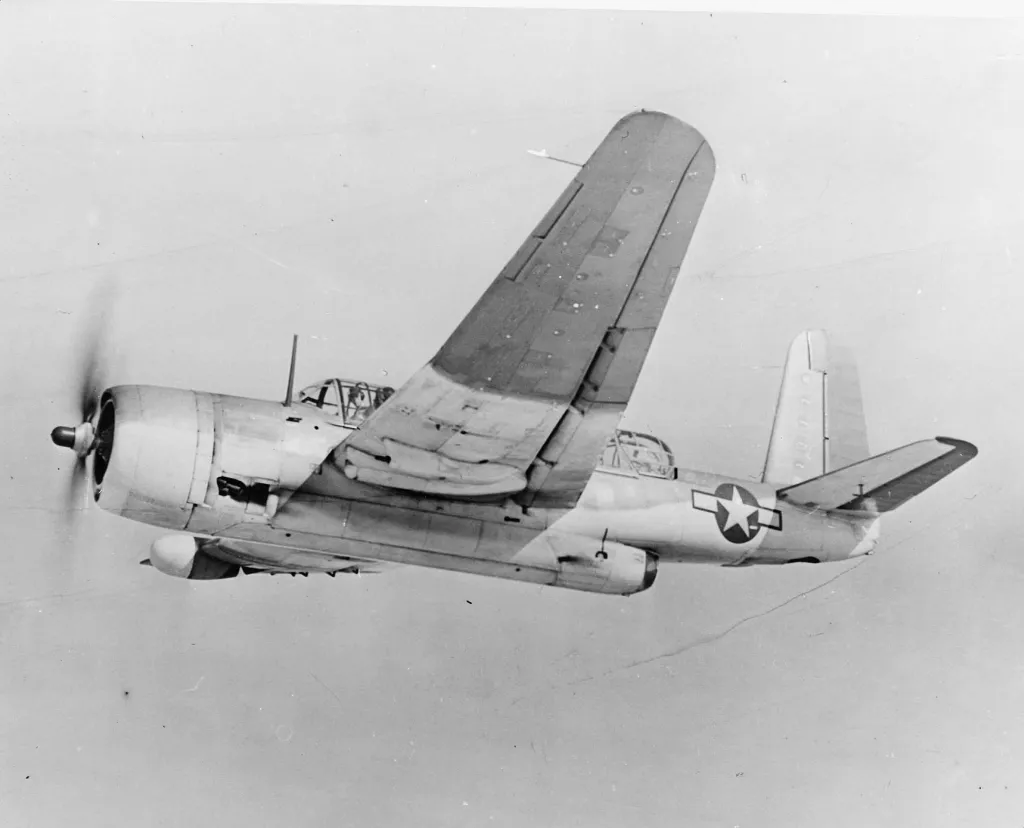
XTBY-2 in flight testings, 1943
It was powered by the new Pratt & Whitney R-2800-22 series, carried a more powerful armament, with two more fixed wings 0.50-in guns, replacement of the dorsal turret by a cal.50 and keeping it's "stinger" 0.30in ventral position. The payload was unchanged, but the underwings received four zero-length stubs racks for optional 5-inch rockets or depth charges. The Search radar was carried on the leading edge of the left wing, its antenna housed in a radome. It allowed to detect all targets on the surface at a range of about 100 km.
Production required tooling to produced new parts and the whole process was slow, given low priority compared to in-house projects. The XTBY-2 maiden flight only intervened by 20 August 1944, so 11 months after the signed contract, deliveries commencing from 7 November 1944. The production rate was also slow and the Navy reduced it's order to just 504 aircraft. Eventually V-Day in Europe arrived, the need of the new aircraft was no longer that urgent.
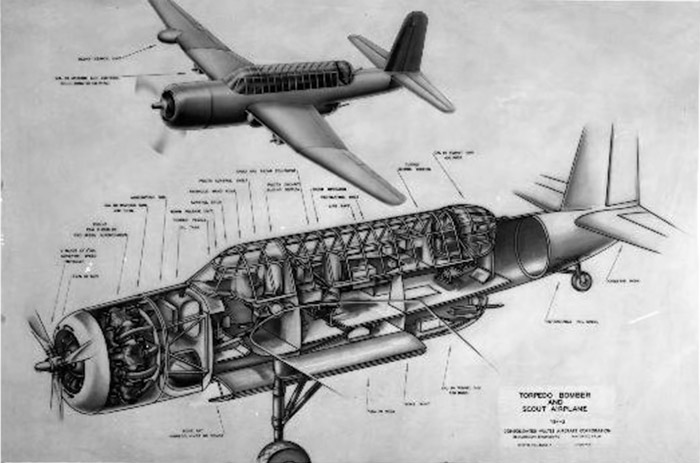
ONI rendition cutaway of the TBY-2
Nevertheless, at least a first squadron received the new model, VT-97, who obtained it gradually from April 1945. A second squadron later was about to received it, but for maintenance reasons it was eventually decided to stick to the Avenger at that point.
By July 1945, the Navy again reduced it's order to 250 aircraft. Eventually in September, only 180 had been completed when the company received cancellation order. None of the planes completed were sent to the front, as the war ended, and instead they all were allocated to VT-97 and a few training units at home, preparing pilots for the radar-equipped version of the Avenger. Few informations are available on the TBY-3 but it was to be powered by the new Pratt and Whitney R2800-25 (used on the Northrop P-61 Black Widow) and poissibly having a heavier armament with six racks underwings, and a cal.0.5 in ventral position, plus a more powerful radar.
All the planes went after the war to the reserve squadron, basically preserved in storage and longer flown. They were now officially surplus to requirement. Too specialized to find a niche on the civilian market nor to be exported at that stage (not efforts were done to market it anyway). The newly built latest Avengers replaced the older ones becoming surplus in turn. Eventually the TBY-2s were officially declared out of service in 1948 and latter sold for scrap, far outlived by the Avenger, despite promising performances and features. Bad luck and bad timing really conspired against it, so it will eventually stay as a great "what if" of aviation history.
Variants

TBY-2 with folded wings
- XTBU-1: Prototype powered by a R-2800-22 engine
- TBU-1 Sea Wolf: Unbuilt Chance-Vought production model.
- XTBY-2 Sea Wolf: Consolidated-Vultee's prototype with additional radar pod
- TBY-2 Sea Wolf: Production variant, cancelled September 1945, 180 out of 1100 ordered delivered.
- TBY-3 Sea Wolf: Improved variant, 600 ordered, and cancelled Sept. 1945.
⚒ specifications 1944 | |
| Dimensions - Lenght | 39 ft 2 in (11.94 m) |
| Dimensions - Wingspan | 56 ft 11 in (17.35 m) |
| Dimensions - Height | 15 ft 6 in (4.72 m) |
| Wing area | Wing area: 440 sq ft (41 m2) |
| Airfoil | Root: NACA 23018, tip: NACA 23010 |
| Weight, empty | 11,636 lb (5,278 kg) |
| Weight, gross | 18,940 lb (8,591 kg) |
| Propulsion | Pratt & Whitney R-2800-22 Double Wasp 18-cyl. ACRPE, 2,100 hp (1,600 kW) |
| Propeller | k |
| Speed, max. | 312 mph (502 km/h, 271 kn) at 17,700 ft (5,395 m) |
| Cruiser speed | 156 mph (251 km/h, 136 kn) |
| Ceiling | 29,400 ft (9,000 m) |
| Climb Rate | 1,770 ft/min (9.0 m/s) |
| Range | 1,025 mi (1,650 km, 891 nmi) with one torpedo |
| Wing load | Unknown |
| Power/mass | Unknown |
| Armament: MGs | .50 in (12.7 mm) M2 cowling, 2× wings, 1x dorsal turret, 1x 03 in (7.62 mm) ventral mount |
| Armament: Torpedoes/Bombs | 2,000 lb (910 kg) payload |
| Crew: | 3: Pilot, radio/navigator/Rear gunner, belly gunner |
Src/Read more about the TBY:
On axis-and-allies-paintworks.comOn vought.org
On historyofwar.org
avionslegendaires.net
The TBY on Ed Nash's Military Matters: "when good enough beats better"
On daveswarbirds.com
On aviastar.org
On militaryfactory.com
wiki
The Models Corner:

Octopus 1:72, CMR 1:72 (resin) and a 1997 book, Naval Fighters Nr. 33 by Steve Ginter, Bill Chana, Phil Prophett. See on Scalemates.
Gallery:

XTBU-1 tested in late 1942
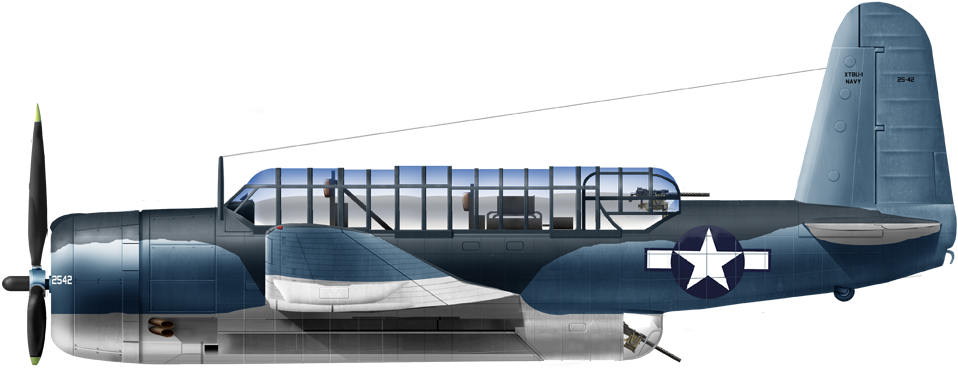
XTBU-1 at NAS Qonsett Point, 1943
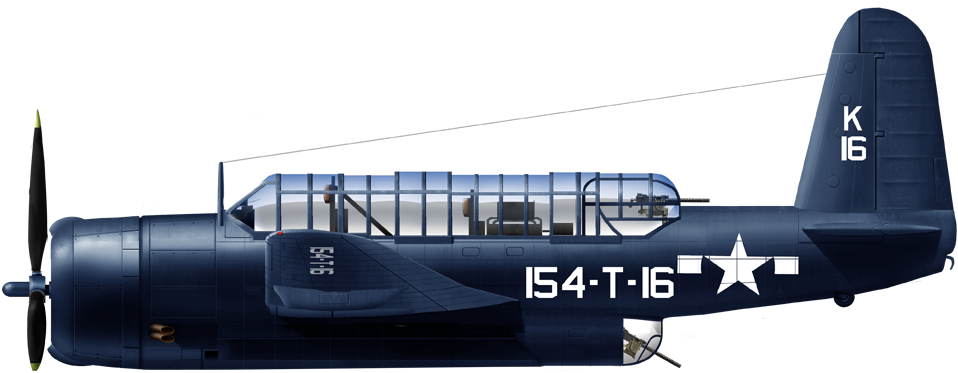
Final production TBY-2 Sea Wolf, VT-97, July 1945.
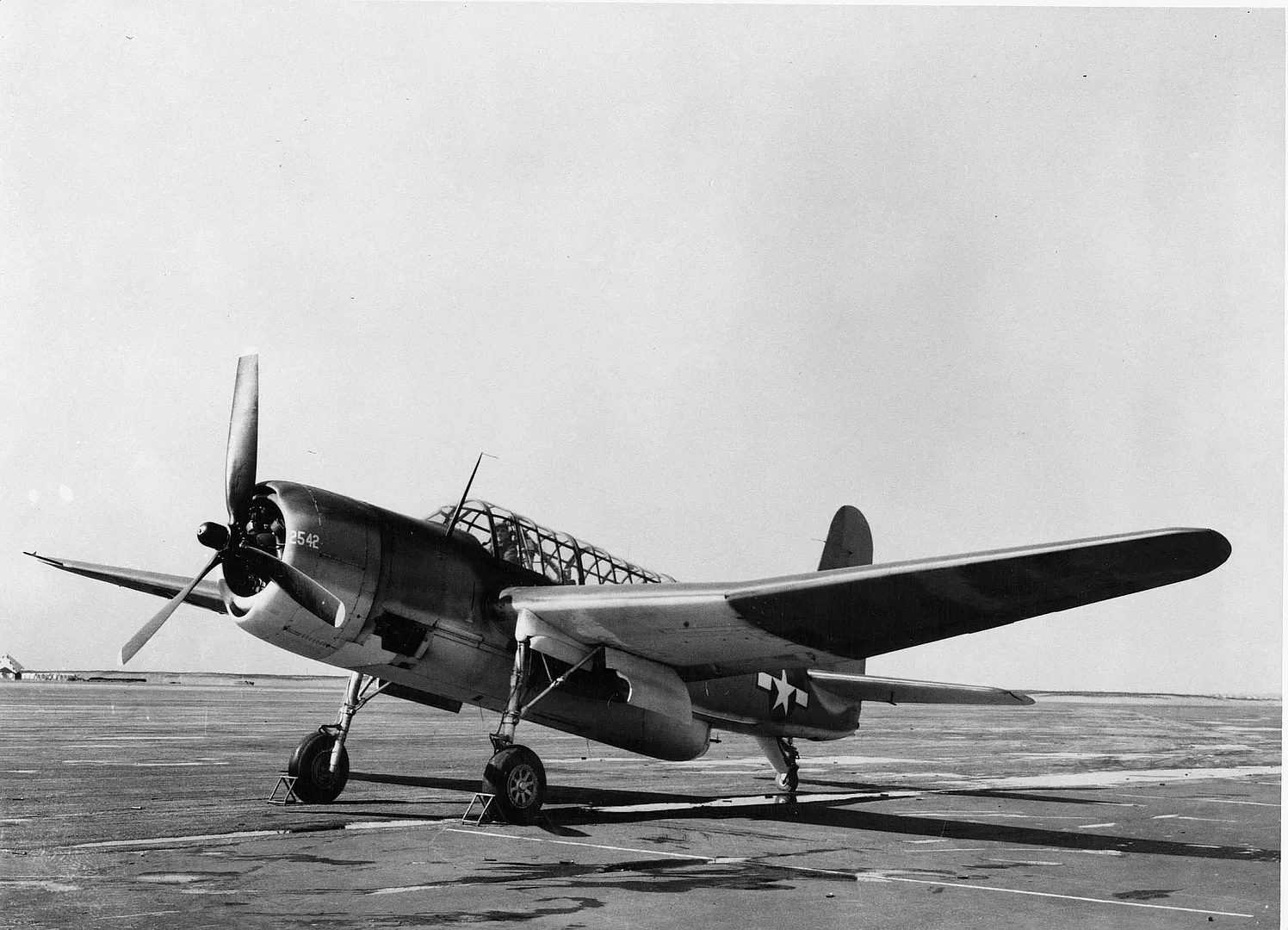
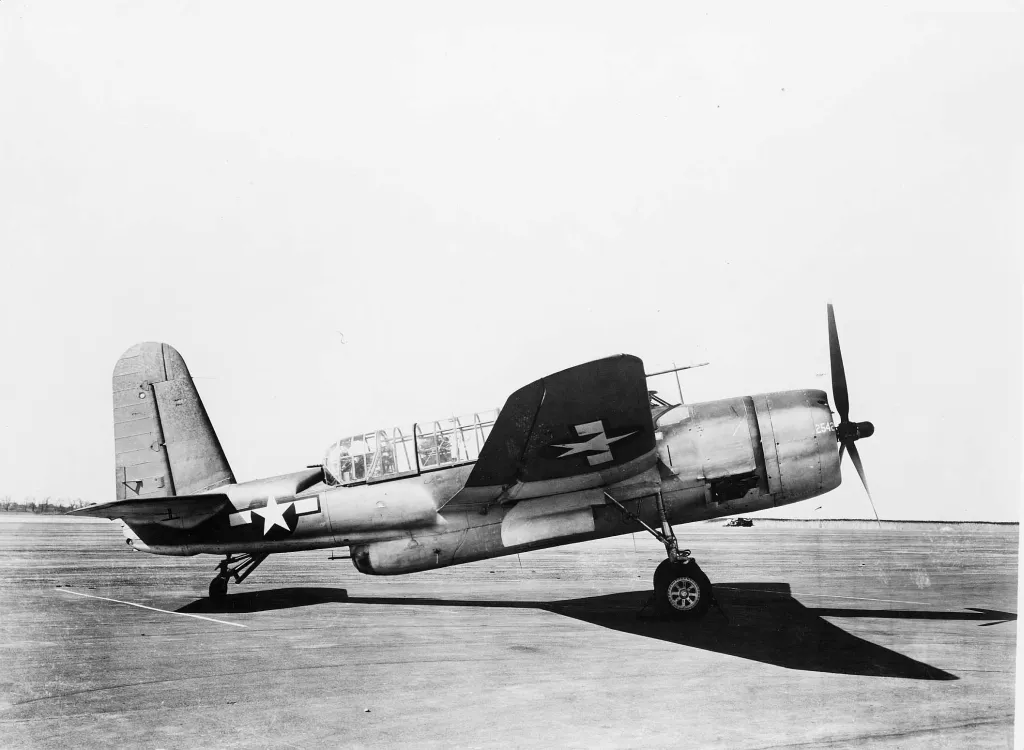

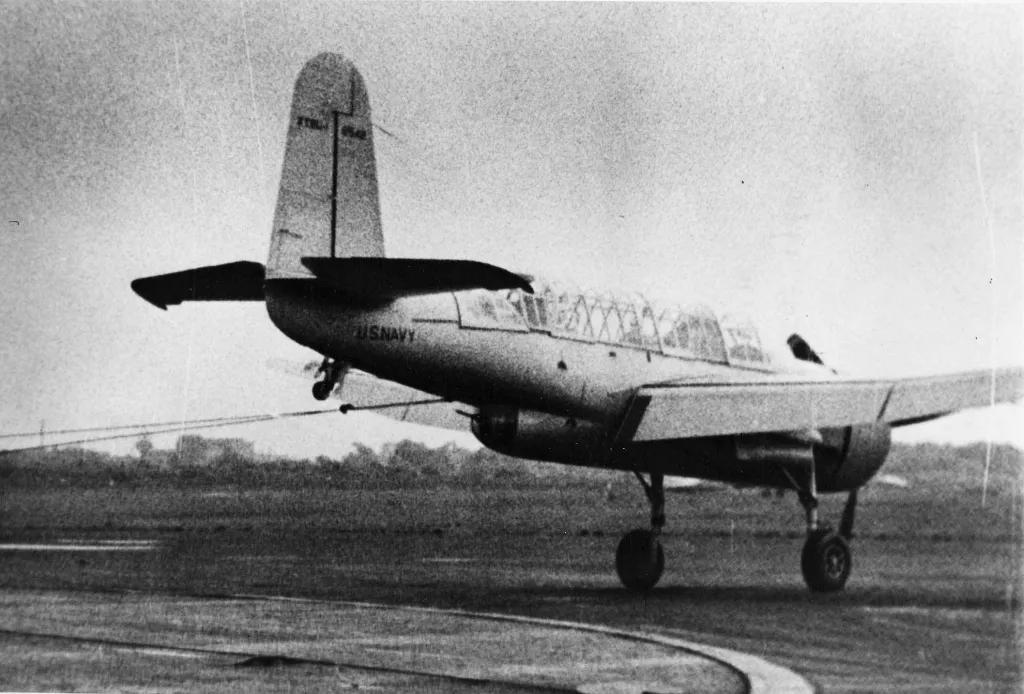
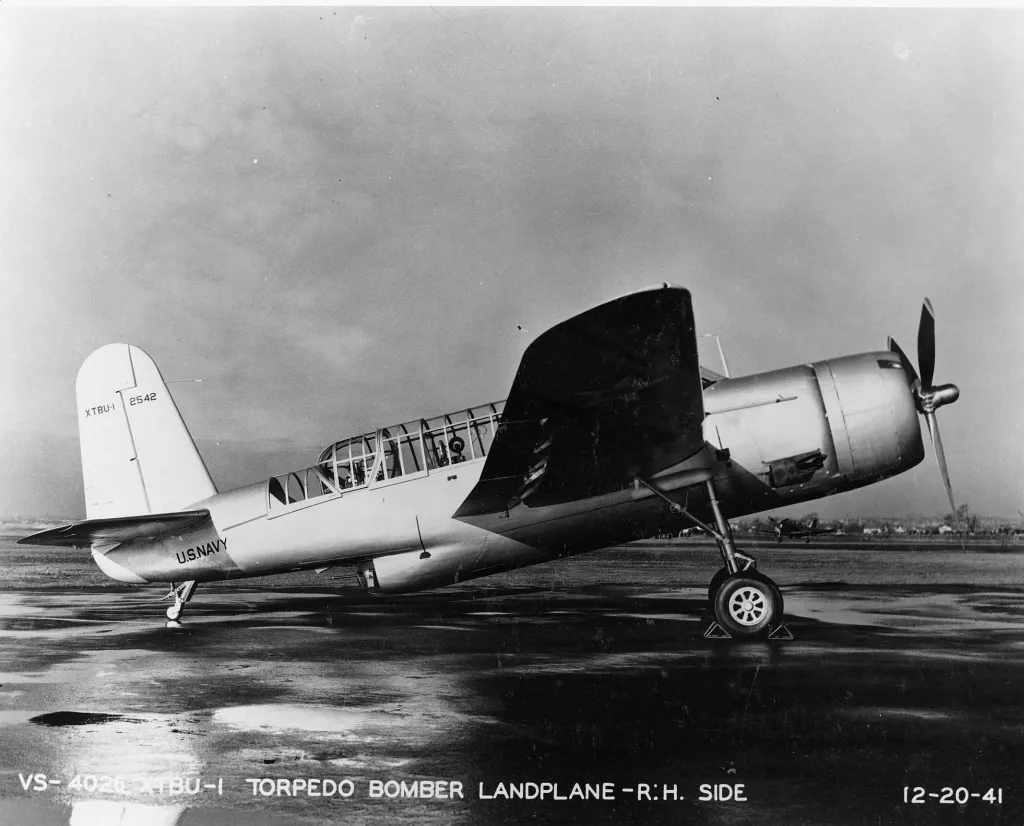
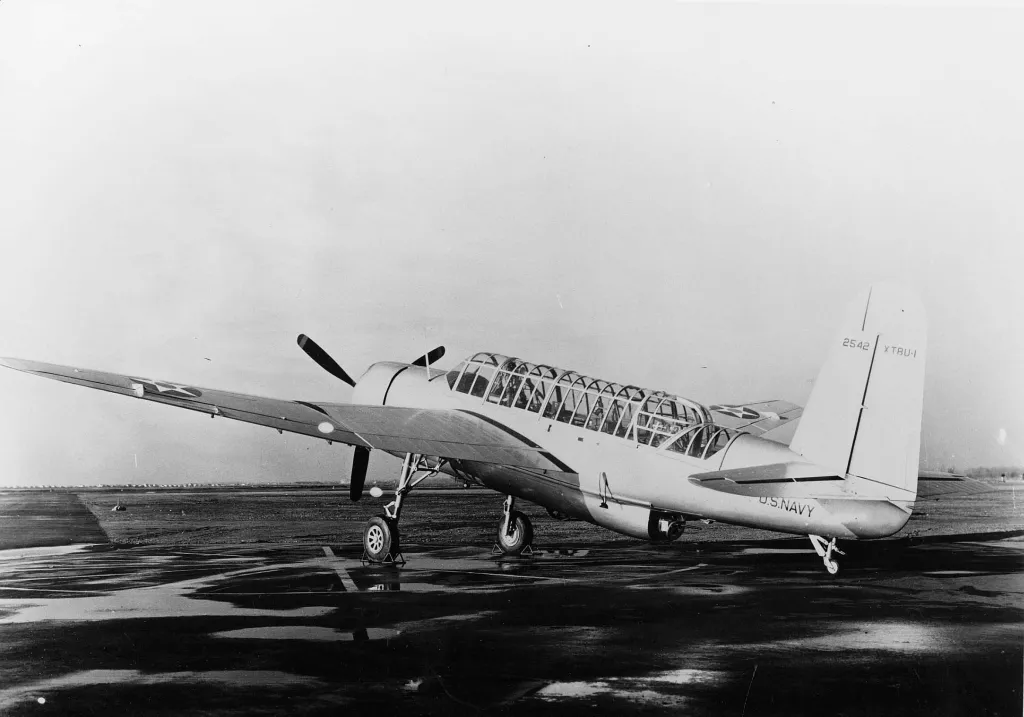
Various photos of the XTBU-1 being tested.
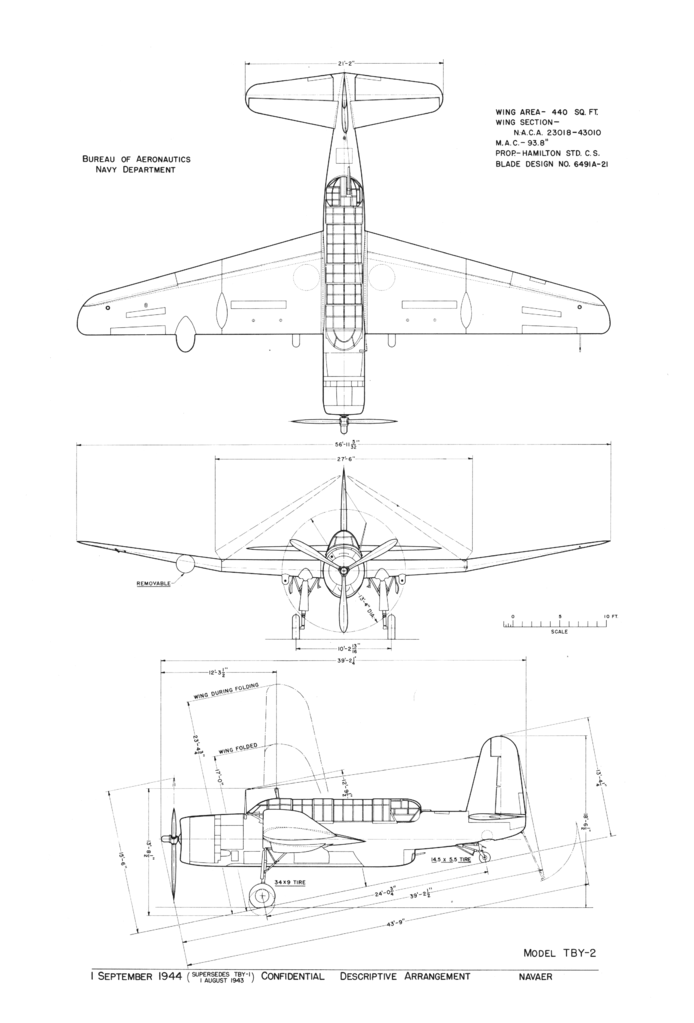
TBY-2 of BuAer 3, side view, 1944

TBY-2 on the ground 1945

TBY-2 SeaWolf parked in September 1945

XTBU-1 tested in late 1942

XTBU-1 at NAS Qonsett Point, 1943

Final production TBY-2 Sea Wolf, VT-97, July 1945.
Photos






Various photos of the XTBU-1 being tested.

TBY-2 of BuAer 3, side view, 1944

TBY-2 on the ground 1945

TBY-2 SeaWolf parked in September 1945
- Lohner E (1913)
- Macchi M3 (1916)
- Macchi M5 (1918)
- Ansaldo ISVA (1918)
- Sopwith Baby (1916)
- Short 184 (1916)
- Fairey Campania (1917)
- Sopwith Cuckoo (1917)
- Felixstowe F.2 (1917)
- Friedrichshafen FF 33 (1916)
- Albatros W4 (1916)
- Albatros W8 (1918)
- Hanriot HD.2
- Grigorovitch M5
- IJN Farman MF.7
- IJN Yokosho Type Mo
- Yokosho Rogou Kougata (1917)
- Yokosuka Igo-Ko (1920)
- Curtiss N9 (1916)
- Aeromarine 39
- Vought VE-7
- Douglas DT (1921)
- Boeing FB.5 (1923)
- Boeing F4B (1928)
- Vought O2U/O3U Corsair (1928)
- Blackburn Blackburn (1922)
- Supermarine Seagull (1922)
- Blackburn Ripon (1926)
- Fairey IIIF (1927)
- Fairey Seal (1930)
- LGL-32 C.1 (1927)
- Caspar U1 (1921)
- Dornier Do J Wal (1922)
- Rohrbach R-III (1924)
- Mitsubishi 1MF (1923)
- Mitsubishi B1M (1923)
- Yokosuka E1Y (1923)
- Nakajima A1N (1927)
- Nakajima E2N (1927)
- Mitsubishi B2M (1927)
- Nakajima A4N (1929)
- CANT 18
WW1
✠ K.u.K. Seefliegerkorps:
 Italian Naval Aviation
Italian Naval Aviation
 RNAS
RNAS
 Marineflieger
Marineflieger
 French Naval Aviation
French Naval Aviation
 Russian Naval Aviation
Russian Naval Aviation
 IJN Air Service
IJN Air Service
 USA
USA
Interwar
 Interwar US
Interwar US
 Interwar Britain
Interwar Britain
 Interwar France
Interwar France
 Interwar Germany
Interwar Germany
 Interwar Japan
Interwar Japan
 Interwar Italy
Interwar Italy
- Curtiss SOC seagull (1934)
- Grumman FF (1931)
- Curtiss F11C Goshawk (1932)
- Grumman F2F (1933)
- Grumman F3F (1935)
- Northrop BT-1 (1935)
- Grumman J2F Duck (1936)
- Consolidated PBY Catalina (1935)
- Brewster/NAF SBN-1 (1936)
- Curtiss SBC Helldiver (1936)
- Vought SB2U Vindicator (1936)
- Brewster F2A Buffalo (1937)
- Douglas TBD Devastator (1937)
- Vought Kingfisher (1938)
- Curtiss SO3C Seamew (1939)
- Douglas SBD Dauntless (1939)
- Grumman F4F Wildcat (1940)
- F4U Corsair (NE) (1940)
- Brewster SB2A Buccaneer (1941)
- Grumman TBF/TBM Avenger (1941)
- Consolidated TBY Sea Wolf (1941)
- Grumman F6F Hellcat (1942)
- Curtiss SB2C Helldiver (1942)
- Curtiss SC Seahawk (1944)
- Grumman F8F Bearcat (1944)
- Ryan FR-1 Fireball (1944)
- Douglas AD-1 Skyraider (1945)
Fleet Air Arm
- Fairey Swordfish (1934)
- Blackburn Shark (1934)
- Supermarine Walrus (1936)
- Fairey Seafox (1936)
- Blackburn Skua (1937)
- Short Sunderland (1937)
- Blackburn Roc (1938)
- Fairey Albacore (1940)
- Fairey Fulmar (1940)
- Grumman Martlet (1941)
- Hawker sea Hurricane (1941)
- Brewster Bermuda (1942)
- Fairey Barracuda (1943)
- Fairey Firefly (1943)
- Grumman Tarpon (1943)
- Grumman Gannet (1943)
- Supermarine seafire (1943)
- Blackburn Firebrand (1944)
- Hawker Sea Fury (1944)
IJN aviation
- Aichi D1A "Susie" (1934)
- Mitsubishi A5M "Claude" (1935)
- Nakajima A4N (1935)
- Yokosuka B4Y "Jean" (1935)
- Mitsubishi G3M "Nell" (1935)
- Nakajima E8N "Dave" (1935)
- Kawanishi E7K "Alf" (1935)
- Nakajima B5N "Kate" (1937)
- Kawanishi H6K "Mavis" (1938)
- Aichi D3A "Val" (1940)
- Mitsubishi A6M "zeke" (1940)
- Nakajima E14Y "Glen" (1941)
- Nakajima B6N "Jill" (1941)
- Mitsubishi F1M "pete" (1941)
- Aichi E13A Reisu "Jake" (1941)
- Kawanishi E15K Shiun "Norm" (1941)
- Nakajima C6N Saiun "Myrt" (1942)
- Yokosuka D4Y "Judy" (1942)
- Kyushu Q1W Tokai "Lorna" (1944)
Luftwaffe
- Arado 196 (1937)
- Me109 T (1938)
- Blohm & Voss 138 Seedrache (1940)
Italian Aviation
- Savoia-Marchetti S.55
- IMAM Ro.43/44
- CANT Z.501 Gabbiano
- CANT Z.506 Airone
- CANT Z.508
- CANT Z.511
French Aeronavale
- GL.300 (1926-39)
- Levasseur PL.5 (1927)
- Potez 452 (1935)
- Loire 210 (1936)
- Loire 130 (1937)
- LN 401 (1938)
Soviet Naval Aviation
- Shavrov SH-2 (1928)
- Tupolev TB-1P (1931)
- Beriev MBR-2 (1930)
- Tupolev MR-6 (1933)
- Tupolev MTB-1 (1934)
- Beriev Be-2 (1936)
- Polikarpov I16 naval (1936)
- Tupolev MTB-2 (1937)
- Ilyushine DB-3T/TP (1937)
- Beriev Be-4 (1940)
-
Skoda Š-328V
R-XIII Idro
Fokker C.XI W (1934)
WW2
- De Havilland Sea Vixen
- Hawker Sea Hawk
- Supermarine Scimitar
- Blackburn Buccaneer
- Hawker Sea Harrier
- Douglas A4 Skyhawk
- Grumman F9F Panther
- Vought F8 Crusader
- McDonnell-Douglas F-4 Phantom-II
- North Am. A5 Vigilante
- TU-142
- Yak 38 forger
☢ Cold War
✧ NATO
 Fleet Air Arm
Fleet Air Arm
 US Navy
US Navy
☭ Warsaw Pact
Merch

Seafire Mark 45; HMS Pretoria Castle

Zeros vs its aversaries

Aichi D3A “Val” Junyo

Mitsubishi A5M poster

F4F wildcat

Macchi M5

SBD Dauntless Coral Sea

SBD Dauntless USS Enterprise

SBD-4 CV22